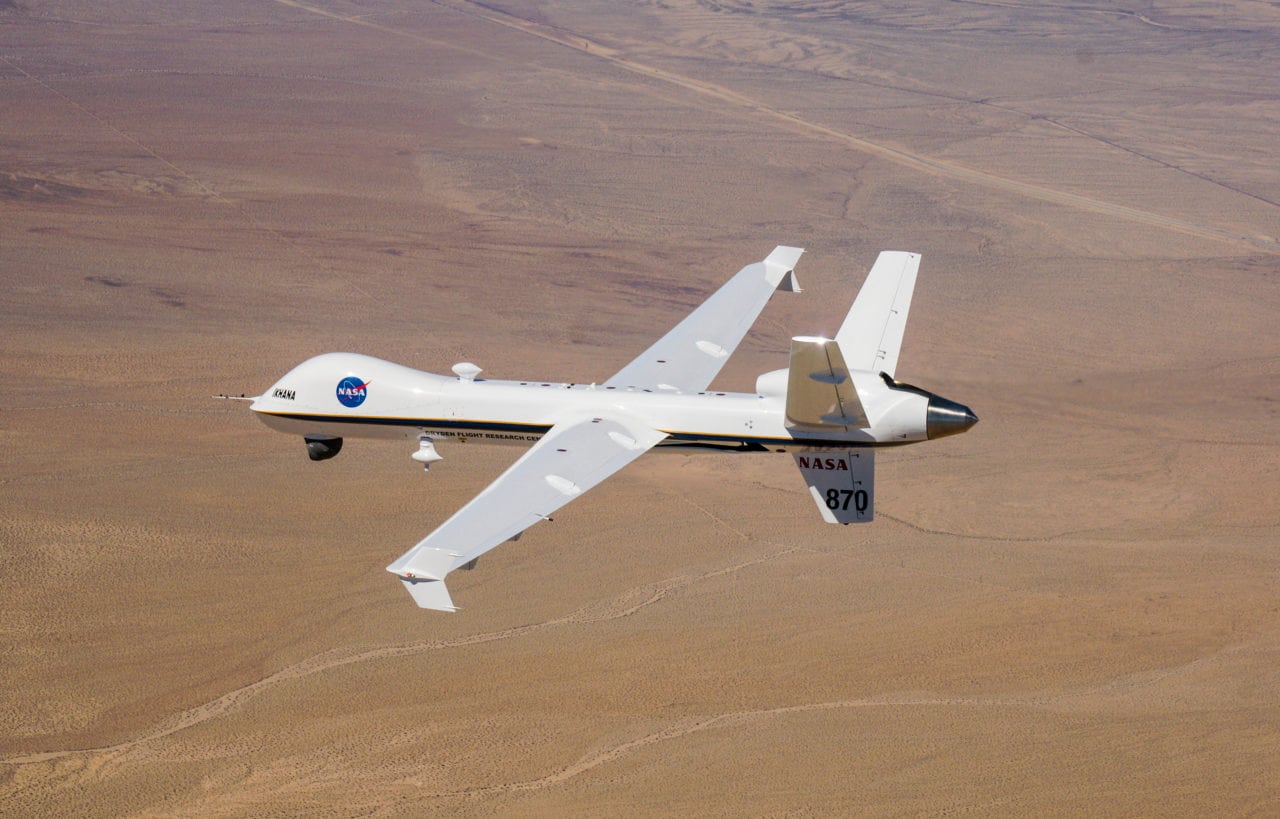
The DAA system installed on a NASA-owned Predator drone. (Business Wire)
A detect-and-avoid (DAA) avionics system developed by General Atomics Aeronautical Systems (GA-ASI) helped enable an unmanned flight through the National Airspace System (NAS) after taking off from Southern California today. The DAA system installed on Ikhana, a NASA-owned Predator B/MQ-9 UAS, enabled the drone to meet the FAA’s 14 CFR 91.113(b) requirement to “see and avoid” other aircraft during today’s flight.
“Our goal of producing UAS that can be certified to fly in non-segregated airspace took a big step forward today,” said GA-ASI CEO Linden Blue.
The DAA system combines automatic collision avoidance with the ability for the pilot to remain ‘well clear’ of other airspace users. Its subsystems include a GA-ASI-developed airborne radar, a TCAS II and DAA tracking capability from Honeywell, ADS-B IN/OUT and a conflict prediction and display system.
“Our DAA system is more capable than the collision avoidance systems required on today’s commercial manned aircraft and we believe it far exceeds the average pilot’s ability to ‘see and avoid’,” said GA-ASI president of aircraft systems David R. Alexander. “The predictive capabilities our system employs create a safe environment for manned and unmanned aircraft to fly together in the NAS.”
GA-ASI has been working with the FAA, NASA’s Armstrong Flight Research Center, Honeywell and other industry partners since 2013 to develop, flight test and standardize an airborne DAA system. Flight tests on NASA’s Ikhana served as the basis for verification and validation of RTCA DO-365 and DO-366 technical standards for DAA, which were published by RTCA in May 2017. This has put GA-ASI on a path towards leading the industry in operating medium-altitude unmanned aircraft in civilian airspace.